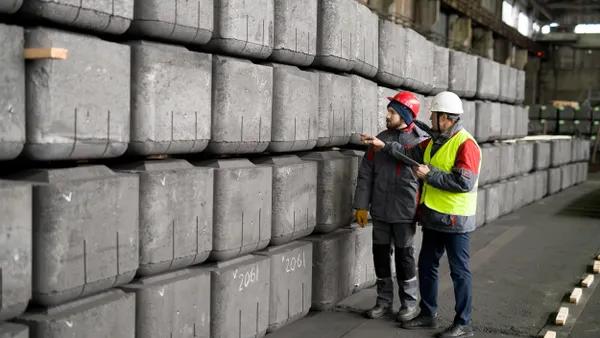Disruptions such as the recent chip shortage underscored the vulnerabilities of complex global supply chains. From automotive to electronics and everything in between, manufacturers scrambled to secure the components needed to keep production lines running. Some still haven’t caught up. If it wasn’t before, this crisis made the importance of robust supplier relationships undeniably clear.
But something like a global supply chain crisis isn’t required to strain relationships between manufacturers and suppliers. Often, its causes are much simpler, and rooted in daily operations—like accounts payable.
The true cost of manual AP could be more than it seems
AP processes play a crucial role in maintaining these critical relationships, and automating those processes is the key to injecting greater resilience into your production line and maintaining strong business relationships. Beyond the apparent expenses of labor, paper, and processing time, manual AP introduces a host of hidden costs that often go unnoticed.
- Slow invoice processing and late payments can strain supplier relationships, leading to increased costs, supply disruptions, and damage to the company's reputation.
- Manual data entry and processing are inherently error-prone, leading to incorrect payments, supplier disputes, and potential financial losses for both parties.
- Manual AP processes often lack visibility into spending patterns, supplier performance, and cash flow, making identification of improvement and cost savings difficult.
- Adherence to frequently changing complex tax and regulatory requirements is further complicated by manual processes—opening organizations up to penalties and legal liabilities.
Strained supplier relations can quietly undermine manufacturing efficiency and growth
Fragile supplier relationships threaten a company’s ability to meet market demand, causing waves that are felt throughout the organization. They can delay delivery of critical components, leading to production slowdowns and missed important business deadlines. These have the potential to damage the company’s reputation, which can result in lost customers or even costly legal battles in extreme cases.
AP automation is a lifeline for supplier relationships
Automating tasks such as matching and approval can quickly and significantly improve efficiency and accuracy, warranting better supplier interactions. AP automation enhances the overall relationship with suppliers by:
- Facilitating communication and reducing misunderstanding between manufacturers and suppliers;
- Ensuring timely payments to suppliers and reducing late fees;
- Minimizing data input and invoice processing errors, leading to fewer disputes;
- Improving visibility, allowing suppliers to track the status of invoices and payments.
In an industry where relationships are critical, AP automation makes them stronger, more collaborative, and leads to more resilient supply chains and improved business outcomes.
4 strategies for overcoming challenges in adopting and implementing AP automation, for stronger vendor relations
Now, that’s not to say moving from manual to automated AP processes doesn’t come with a few challenges. These include the initial investment, integration complexities, resistance to change, data security concerns, and the perception of a steep learning curve.
To effectively navigate these challenges, manufacturers should consider the following strategies:
- Carefully evaluate AP automation vendors, choosing a partner with a proven track record and strong support services—like an implementation team that can help limit disruptions especially with numerous vendors to consider.
- Don’t underestimate the value of change management and comprehensive training because, in the end, your users must accept the new technology. Involving employees in the vendor evaluation process and demonstrating how automation can improve their daily lives, will help overcome resistance and build enthusiasm for the new system.
- Notify your vendors about this exciting new change, highlighting the benefits they’ll receive as a result. In this process, suppliers are stakeholders as well, so take time to walk them through the vendor portal and any other operational changes they may experience. Explain the new level of visibility they can expect from AP automation.
- Perform ongoing data quality assessments to ensure accurate data migration and ongoing maintenance.
- Prioritize security protocols, data protection for you and your vendors, and compliance with industry regulations. It’s important that suppliers can trust their banking information is safe with you and your AP automation provider.
Supplier relationships are a key reason to automate AP
Embracing AP automation isn’t just about technology but instead it’s about unlocking the full potential of your business. The relationship with your suppliers is crucial to operational success. Whether delivering your product requires computer chips, paper pulp, or any other raw or processed material, prioritizing AP automation can help transform vendor relationships from purely transactional to strategic.
The benefits are clear and transformative for both sides: improved accuracy and efficiency, enhanced supplier satisfaction, and greater resilience against supply chain disruptions. As AP automation vendors further integrate technologies like robotic process automation (RPA), AI, and machine learning into their platforms the opportunities for optimization continue to grow. Simply put, manufacturers adopting automation to strengthen their supplier relationships will better equip themselves for long-term growth, profitability, and competitive advantage.










